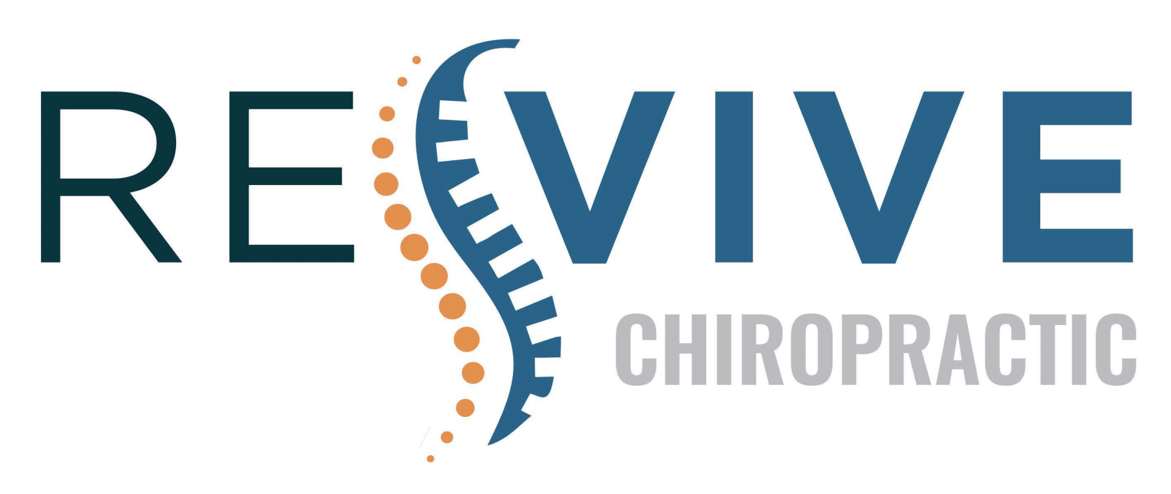If you've ever experienced the nagging pain of a headache, you know how disruptive it can be. You might be surprised to learn that chiropractic adjustments can offer effective natural relief by addressing the underlying causes tied to spinal misalignments. These adjustments not only alleviate pain but can also enhance your overall well-being. As you explore this option, consider how various types of headaches might respond to such treatments and what additional lifestyle changes could further support your journey to relief. The next steps might just transform your approach to managing headaches.
Understanding Headaches
Headaches can be a frustrating and debilitating experience, affecting your daily life and productivity. Understanding what triggers your headaches is essential to finding effective relief. They can stem from various sources, including stress, tension, dehydration, or even hormonal changes. When you're aware of these triggers, you can take proactive steps to minimize them.
Tension headaches are the most common type, often caused by tight muscles in your neck and shoulders. If you find yourself clenching your jaw or hunching your shoulders, it's time to recognize the signs.
Migraines, on the other hand, can involve more severe symptoms like nausea and sensitivity to light. Identifying your specific migraine triggers—whether they're certain foods, stress levels, or sleep patterns—can be game-changing.
Another type is cluster headaches, which tend to occur in cycles and can be excruciating. If you've experienced them, you know how debilitating they can be. Keeping a headache diary may help you identify patterns and triggers, allowing you to make lifestyle adjustments that could prevent future occurrences.
You should also consider your hydration and nutrition. Sometimes, simply drinking water or adjusting your diet can alleviate a headache.
Pay attention to how your body responds to different foods and stressors. By understanding the intricacies of your headaches, you empower yourself to tackle them effectively, paving the way for a healthier, more enjoyable life.
The Role of Chiropractic Care
Chiropractic care can offer significant relief for your headaches through targeted adjustments.
By addressing misalignments in your spine, these techniques can alleviate tension and improve overall function.
Many people find that regular chiropractic visits help reduce the frequency and intensity of their headaches.
Benefits of Chiropractic Adjustments
Many people find relief from headaches through chiropractic adjustments, which can effectively address underlying spinal issues. By focusing on the spine's alignment, chiropractic care targets nerve interference that might contribute to your headaches. When your spine is properly adjusted, it can enhance your overall nervous system function, leading to reduced headache frequency and intensity.
Chiropractic adjustments can also improve blood flow and oxygen supply to the brain. This increased circulation can alleviate tension and promote relaxation, making it easier for you to manage stress—one of the common triggers of headaches.
Additionally, regular adjustments can enhance your posture, which is essential for preventing tension headaches caused by muscle strain.
Furthermore, chiropractic care often emphasizes lifestyle changes, such as ergonomics and exercise, that can further reduce headache occurrences. You may find that your overall well-being improves as you commit to this holistic approach.
Many individuals report not just fewer headaches but also enhanced energy levels and improved sleep quality as a result of chiropractic adjustments. Ultimately, the benefits of chiropractic care extend beyond just headache relief, offering a pathway to a healthier, more balanced life.
Techniques for Headache Relief
When seeking relief from headaches, various chiropractic techniques can play an essential role in restoring balance and reducing pain. One of the most common methods is spinal manipulation. By realigning your spine, a chiropractor can alleviate nerve irritation and tension that may contribute to headaches. This adjustment not only improves circulation but also enhances your overall spinal health.
Another effective technique is myofascial release. This hands-on therapy targets tight muscles and fascia, helping to release built-up tension in your neck and shoulders. You'll often find that this approach provides immediate relief from headache symptoms.
Additionally, some chiropractors utilize therapeutic exercises and stretches tailored to your specific needs. These exercises can strengthen your muscles, improve posture, and promote better alignment, ultimately preventing future headaches.
Finally, don't overlook the importance of lifestyle advice. Your chiropractor may provide guidance on ergonomic adjustments, nutrition, and stress management techniques that can further reduce headache frequency and intensity.
How Adjustments Alleviate Pain
Utilizing adjustments can markedly alleviate headache pain by addressing misalignments in the spine. When your spine is out of alignment, it can lead to tension and strain in the surrounding muscles and nerves. These misalignments may restrict blood flow or irritate nerves, which can trigger headaches. By receiving chiropractic adjustments, you can restore proper alignment, relieving this pressure and allowing your body to function more effectively.
Adjustments help improve spinal mobility and reduce muscle tension, which ultimately helps decrease headache frequency and intensity. When your spine is aligned correctly, it can enhance communication between your brain and body, ensuring that your nervous system operates efficiently. This improved communication can help reduce the physiological factors that contribute to headaches, such as inflammation and muscle tightness.
You'll likely notice that your headaches become less severe or occur less often after a few adjustments. Additionally, many people experience a sense of relaxation and well-being following their sessions. Regular adjustments can also promote better posture, which is essential since poor posture can exacerbate headache symptoms.
Beyond merely treating symptoms, adjustments support your body's natural healing processes. By addressing the root cause of your headaches rather than merely masking the pain, you're likely to find more sustainable relief.
Types of Headaches Addressed
When it comes to headaches, understanding the different types can help you find the right relief.
Tension headaches, migraines, and cluster headaches each have unique characteristics and triggers.
Let's explore how these headaches affect you and how natural remedies can make a difference.
Tension Headaches Explained
Tension headaches, often arising during periods of stress or fatigue, are among the most common types of headaches people experience. You might feel a dull, aching sensation around your forehead or the back of your head, making it hard to focus.
They can last from 30 minutes to several days, and while they're usually not debilitating, they can greatly impact your daily activities.
Here are some key characteristics of tension headaches:
- Symptoms: Mild to moderate pain, tightness, or pressure around the forehead, temples, or neck.
- Triggers: Stress, anxiety, poor posture, or prolonged screen time.
- Frequency: They can occur occasionally or develop into chronic headaches, affecting you multiple times a month.
- Demographics: They're more common in adults, particularly women, but anyone can experience them.
- Relief Strategies: Techniques like deep breathing, stretching, and over-the-counter medications can often help.
Understanding tension headaches can empower you to identify triggers and implement effective relief strategies.
Migraines and Chiropractic Benefits
Migraines can be debilitating, often leaving you in search of effective relief. If you've experienced these intense headaches, you might feel desperate for solutions that don't rely on medication. Chiropractic care offers a promising alternative, targeting the underlying causes of migraines rather than just masking the pain.
Research suggests that spinal misalignments can contribute to migraine frequency and intensity. When you visit a chiropractor, they'll assess your spine and nervous system, identifying areas that may be causing tension or irritation. Through spinal adjustments, they help restore proper alignment, which can alleviate pressure and reduce migraine attacks.
You'll also benefit from additional treatments your chiropractor might suggest, like massage therapy, which can ease muscle tension and improve blood flow.
Lifestyle advice, such as posture correction or ergonomic adjustments, can also play a vital role in managing migraines.
Cluster Headaches Overview
Cluster headaches, often described as one of the most painful types of headaches, can strike suddenly and with little warning, leaving you in search of immediate relief.
These headaches usually occur in cyclical patterns or "clusters," which means you might experience frequent attacks for weeks or months, followed by periods of remission. Understanding cluster headaches can help you recognize symptoms and seek appropriate treatment.
Here are some key characteristics of cluster headaches:
- Severe Pain: Intense, burning, or piercing pain, often localized around one eye.
- Duration: Attacks typically last between 15 minutes to three hours.
- Frequency: You might experience multiple attacks in a single day, especially during a cluster period.
- Triggers: Common triggers include alcohol, smoking, strong smells, and changes in sleep patterns.
- Associated Symptoms: Symptoms often include nasal congestion, tearing of the eye, or swelling around the affected area.
If you suspect you're experiencing cluster headaches, it's crucial to consult a healthcare professional for proper diagnosis and treatment options.
Understanding your condition can lead to effective management and relief strategies.
Benefits of Natural Relief
Have you ever wondered why so many people are turning to natural remedies for headache relief? The answer lies in the myriad of benefits that these approaches offer.
First and foremost, natural relief methods often come with fewer side effects compared to over-the-counter medications. You won't have to worry about drowsiness, stomach irritation, or dependency that can accompany conventional pain relievers.
Additionally, natural remedies can address the root causes of your headaches, promoting long-term wellness rather than just masking the pain. Techniques like adjustments, herbal supplements, and lifestyle changes work to improve your overall health, helping you become more resilient to headache triggers. This is especially appealing if you're tired of relying on pills that only provide temporary relief.
Another significant benefit is the holistic approach natural remedies promote. By focusing on mind-body connections, you can enhance your emotional and physical well-being. Practices such as yoga or meditation, often used in conjunction with natural remedies, can help reduce stress levels—one of the most common headache triggers.
Lastly, many people find that natural methods foster a sense of empowerment. You take control of your health by choosing options that align with your values and preferences. Embracing natural relief can lead to a more balanced lifestyle, allowing you to enjoy life without the constant looming threat of headaches.
The Adjustment Process Explained
Understanding spinal alignment is key to relieving your headaches.
Through various techniques, you can target pain and improve your overall wellness.
Let's explore how these adjustments can make a difference in your life.
Understanding Spinal Alignment
When it comes to natural headache relief, spinal alignment plays an important role in maintaining overall health. Proper alignment guarantees your nervous system functions at its best, which is essential for preventing headaches.
When your spine is misaligned, it can create tension and stress in surrounding muscles and nerves, leading to discomfort and pain.
Understanding the adjustment process is vital for achieving spinal alignment. Here are some key points to take into account:
- Nerve Function: Misalignments can compress nerves, impeding their ability to communicate effectively with your body.
- Muscle Tension: Poor alignment often results in muscle imbalances, causing tension that contributes to headaches.
- Posture: Your daily posture affects spinal alignment; improper posture can exacerbate misalignments.
- Regular Check-ups: Routine adjustments can help maintain spinal health and prevent future headaches.
- Holistic Approach: Addressing spinal alignment alongside lifestyle factors—like diet and stress management—can enhance overall well-being.
Techniques for Pain Relief
Several effective techniques can provide pain relief through the adjustment process. One of the most common methods is spinal manipulation, where the chiropractor applies controlled force to specific joints. This realigns your spine, reduces nerve irritation, and improves mobility. You might also experience relief from muscle tension, which can contribute to headaches.
Another technique is myofascial release, focusing on relieving tightness in the fascia surrounding your muscles. By applying gentle pressure, this method promotes relaxation and improves blood flow, helping alleviate pain.
You may also benefit from stretching and strengthening exercises tailored to your specific needs. These exercises can enhance flexibility and support spinal alignment, ultimately reducing headache frequency and intensity.
Incorporating lifestyle changes, such as proper hydration, nutrition, and stress management, can also enhance the effectiveness of these techniques. Your chiropractor may suggest ergonomic adjustments to your workspace or posture improvements to prevent future headaches.
Each technique is designed to work in harmony with your body. During your sessions, communicate openly with your chiropractor about what works best for you to achieve ideal pain relief.
Complementary Therapies to Consider
While traditional treatments for headaches often focus on medications, many people find relief through complementary therapies. These alternative approaches can enhance your overall well-being and may provide the relief you're seeking. By exploring various methods, you can identify what works best for you.
Here are some complementary therapies to take into account:
- Acupuncture: This ancient Chinese technique involves inserting thin needles into specific points on the body. Many find it effective for reducing headache frequency and intensity.
- Massage Therapy: Regular massages can relieve muscle tension and stress, which are common headache triggers. Think about targeted therapy focused on the neck and shoulders.
- Aromatherapy: Essential oils, such as lavender or peppermint, can promote relaxation and alleviate headache symptoms. Inhaling these scents or using them in a diffuser might help.
- Chiropractic Adjustments: Aligning the spine can relieve pressure on nerves and improve blood flow, potentially reducing headache occurrences. Regular visits can maintain your spinal health.
- Mindfulness and Meditation: Practicing mindfulness techniques can help you manage stress and anxiety, both of which can contribute to headaches. Even a few minutes of deep breathing can make a difference.
Incorporating one or more of these therapies into your routine might provide the relief you need.
Be sure to consult with a healthcare professional before starting any new treatment to verify it aligns with your health needs.
Lifestyle Changes for Prevention
To prevent headaches effectively, you can make simple yet impactful lifestyle changes that promote overall wellness.
First, pay attention to your hydration. Dehydration is a common trigger, so make sure you're drinking enough water throughout the day. Aim for at least eight glasses, and adjust based on your activity level and climate.
Next, consider your diet. Incorporate a balanced mix of fruits, vegetables, whole grains, and lean proteins. Try to avoid trigger foods, which can vary from person to person, but often include aged cheeses, processed meats, and excessive caffeine. Keeping a food diary can help identify what might be causing your headaches.
Regular physical activity is also essential. Aim for at least 30 minutes of moderate exercise most days. This not only helps reduce stress but can also improve sleep quality, which is important for headache prevention.
Speaking of sleep, establish a consistent sleep schedule. Go to bed and wake up at the same time each day to help regulate your body's internal clock.
Lastly, manage stress through mindfulness practices such as yoga, meditation, or deep breathing exercises. These techniques can help lower tension and anxiety, which are common headache triggers.
Patient Success Stories
Many individuals have found relief from chronic headaches through natural methods, and their stories inspire hope for others struggling with similar issues.
You might relate to Sarah, who battled migraines for years. After incorporating regular chiropractic adjustments, she noticed a considerable reduction in the frequency and intensity of her headaches. For her, it was life-changing.
Then there's John, who struggled with tension headaches due to stress. By combining adjustments with mindfulness practices, he learned to manage his stress better, leading to fewer headaches and improved overall well-being. You can take comfort in stories like his, knowing that a thorough approach can yield positive results.
Consider Maria, who shared that dietary changes alongside chiropractic care helped her pinpoint headache triggers. By eliminating certain foods and receiving adjustments, she regained control over her life.
Here are a few key takeaways from these success stories:
- Consistency matters: Regular adjustments can lead to long-lasting relief.
- Holistic approach: Combining chiropractic care with lifestyle changes often yields the best results.
- Personalized plans: What works for one person may differ for another; tailored strategies are essential.
- Mindfulness techniques: Stress management can considerably reduce headache occurrences.
- Community support: Sharing experiences with others can motivate you to stay committed to your relief journey.
These narratives highlight the potential of natural methods, encouraging you to explore options that might work for you.
You're not alone in this journey!
Finding a Qualified Chiropractor
Finding a qualified chiropractor is an essential step in your journey toward natural headache relief. You want someone who understands your specific needs and can provide tailored care. Start by asking for recommendations from friends, family, or your primary care physician. Personal referrals often lead you to trustworthy professionals.
Once you have a list of potential chiropractors, check their credentials. Verify that they're licensed and have the necessary training in chiropractic care. Look for additional certifications or specializations in treating headaches or related conditions. This information is usually available on their website or through online databases.
Next, read reviews and testimonials from other patients. These can give you insight into their experiences and the chiropractor's approach to treatment. Pay attention to comments about communication, effectiveness, and overall satisfaction.
Don't hesitate to schedule a consultation. This initial meeting will allow you to ask questions and assess the chiropractor's approach. Discuss your headache history, concerns, and treatment expectations. A good chiropractor will listen attentively and provide an initial assessment, explaining their proposed treatment plan.
Finally, consider the office environment and staff. A welcoming, professional atmosphere can enhance your overall experience. Confirm that their office hours and location fit your schedule, as convenience plays a significant role in committing to treatment.
Conclusion
Incorporating chiropractic adjustments into your headache relief routine can make a significant difference. By addressing spinal misalignments, these adjustments not only reduce pain but also promote overall well-being. Coupled with lifestyle changes and complementary therapies, you can effectively manage your headaches naturally. Don't let headaches control your life—take charge by seeking a qualified chiropractor and explore the benefits of holistic care. Your journey to a pain-free life starts with the right support and strategies.



